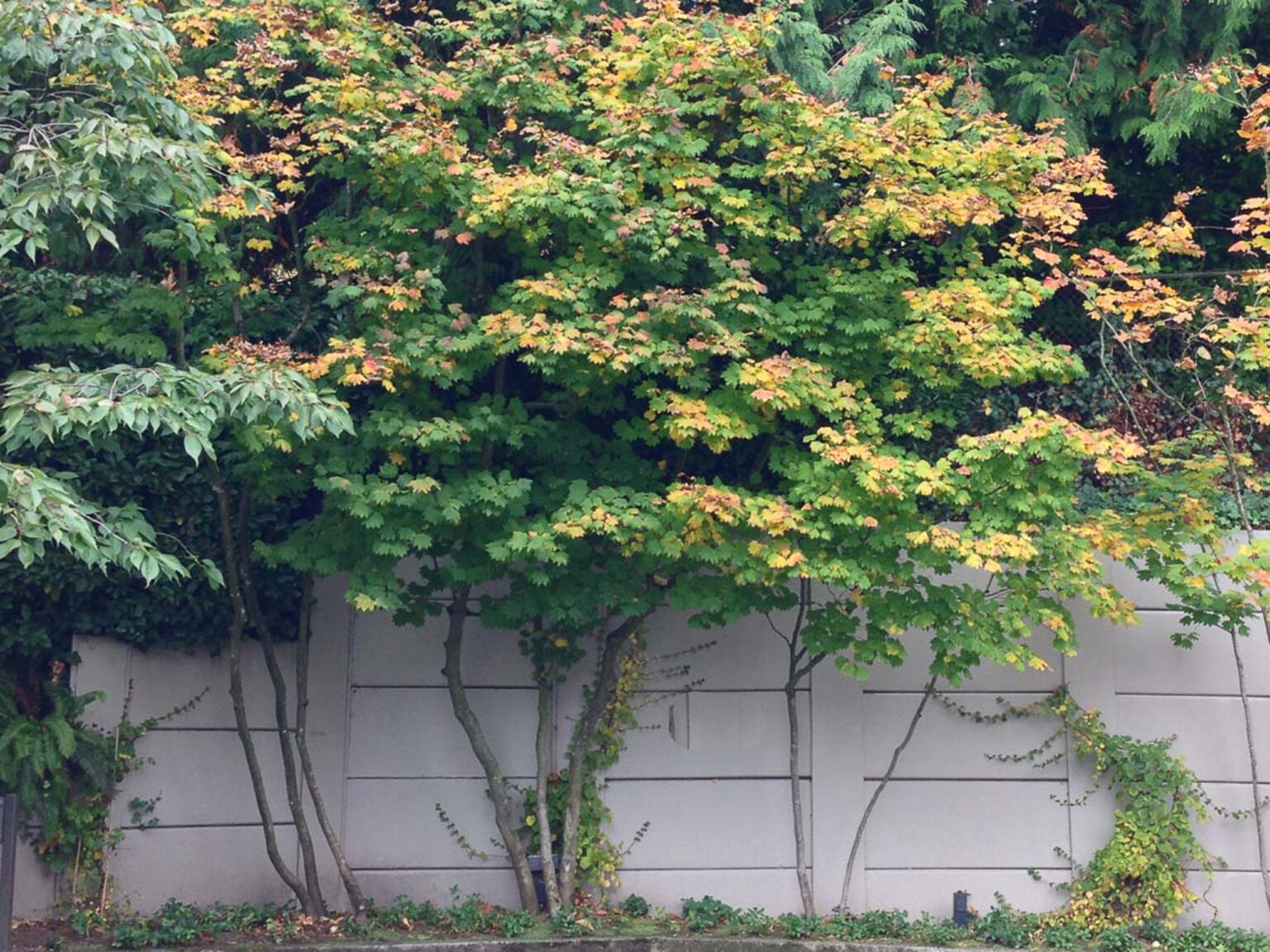Native and climate-adapted varieties save water and add beauty to modern garden landscapes
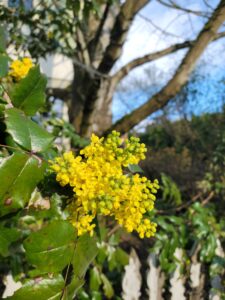 In the 1980s, the utility Denver Water coined the term “xeriscape” by combining the word “landscape” with the Greek prefix “xero” for “dry.” A niche movement was born, but the use of low-water shrubs and plants was at the time predominantly limited to regions with naturally arid climates, like Colorado.
In the 1980s, the utility Denver Water coined the term “xeriscape” by combining the word “landscape” with the Greek prefix “xero” for “dry.” A niche movement was born, but the use of low-water shrubs and plants was at the time predominantly limited to regions with naturally arid climates, like Colorado.
With droughts intensifying in severity, duration and extent across the country, a shift is occurring in the plant world. The demand for drought-tolerant landscaping has surged not only in arid regions, but also in areas previously considered less susceptible to drought or having rainless summers.
The Pacific Northwest is one of those areas.
Low-water plants constitute a large subset of the horticulture world. Low-water shrub varieties in particular have proved popular for their beauty, utility and viability as sustainable options.
Low-water shrubs are also leaving a lasting impression on the market due to their adaptability and diverse range of sizes, forms and shapes. According to the U.S. Environmental Protection Agency, outdoor water use accounts for around 30% of total household water consumption in the United States, and over 50% in arid regions.
Sustainable natives
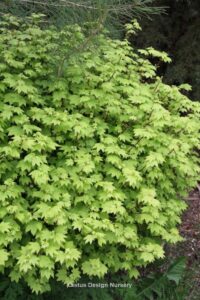
Because Acer circinatum (vine maple, USDA Zones 4–8, to 20 feet tall) is often listed as a large shrub/small tree, it earns a place in the drought-tolerant landscape. A deciduous Oregon native, it fits in sun or shade, and in the understory.
It’s one of the few multi-stemmed plants for dry or shady areas, and it has brilliant red leaves in the fall, said Judy Alleruzzo, houseplant and perennial buyer at Al’s Garden & Home, a large Oregon grower-retailer with four locations. Alleruzzo also co-hosts the Garden Time podcast.
“I think it is good to have both (native and cultivated) trees and shrubs,” Alleruzzo said. “Late winter and spring is when they shine, and the other plants that are cultivated, they shine in other parts of the season. Natives understand winter wet and summer drought.”
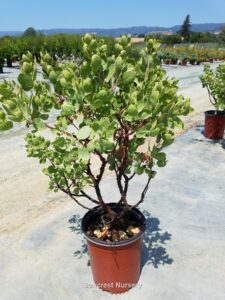
COURTESY SUNCREST NURSERY
Arctostaphylos (manzanita) is valued for its heat and drought resilience and good looks throughout the season, said Greg Shepherd of Xera Plants, a Portland, Oregon-based nursery that specializes in climate-adapted plants. “They are iconically western and thrive no matter how hot. With over 25 varieties, there is something for everyone in the mix,” he said.
Arctostaphylos × ‘Austin Griffiths’ (USDA Zone 7, 9 feet high by 7 feet wide) is “one of the very best garden manzanitas,” Shepherd said. It reaches a small tree form and is appreciated by hummingbirds finding its copious pink flowers in January and February.
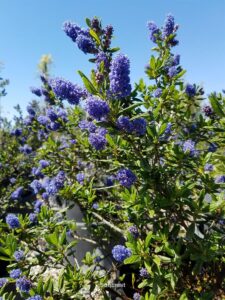
COURTESY SUNCREST NURSERY
Ceanothus (California lilac) is a large genus of native shrubs. It is a hardy evergreen encompassing excellent varieties such as the fast grower C. thrysiflorus ‘Victoria’ (USDA Zone 8, 10 feet tall by 10 feet wide) and the denser, compacter ‘Skylark’ (USDA Zone 7, 1–2 feet tall by 2–3 feet wide) with yellow variegated leaves, said Darren Morgan at retailer Shonnard’s Nursery, Florist and Landscape, located in Corvallis, Oregon.
“All of these California lilacs are evergreen, and they bloom heavily in the spring and often again more lightly in the fall,” Morgan said. “The blue flowers are lightly scented and very attractive to bees of all sorts.”
Shonnard’s also sells a lot of Ceanothus impressus, Morgan said, which is not as hardy in Oregon.
Mahonia is successful for dry shade once established, and offers year-round interest, with budding and blooming in winter, and evergreen upright, spiky (deer-resistant) foliage. For a lighter texture and compact behavior, Alleruzzo points to Mahonia eurybracteata ‘Soft Caress’ PP20183 (USDA Zones 7–11, 3 feet high and wide), winner of the 2015 Plant of the Year at the Chelsea Flower Show in London, with its upright bright yellow flowers over slender long leaves.
For a dramatic and large focal point, Mahonia × media ‘Charity’ (USDA Zones 7–10) can get to a statuesque 10 feet tall and wide, offering structure at the back of the garden or for a “pokey” hedge, Alleruzzo said. It bears multiple spikes of fragrant golden blooms in December through February, followed by deep purple–blue berries in late summer and fall that attract birds.
The native Ribes sanguineum (red flowering currant, USDA Zones 5–8, 8–10 feet tall and wide) is multi-stemmed and an early bloomer, from late winter to early spring, with cascades of flowers and distinct lobed, toothed leaves. The bloom time can be staggered by placing in both sun and shade.
Ribes sanguineum ‘King Edward VII’ is an old and popular variety, Alleruzzo said, with darker red blooms that are pollinator magnets, followed by blue–black berries.
Fragrant and flowering
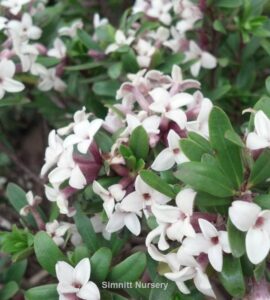
transatlantica ‘Blafra’ PP18361)
COURTESY SIMNITT NURSERY
Daphne × transatlantica ‘BLAFRA’ PP18361 (‘Eternal Fragrance’, USDA Zones 5–8, 3 feet tall and wide) is Shonnard’s No. 1 selling shrub.
“When you hear Daphne, most people think of the broader-leaved partial shade lover that isn’t so drought tolerant, but the genus contains numerous plants from arid parts of Europe and Asia Minor, and many hybrids among them have been made. ‘Eternal Fragrance’ wins hands down over other types for being consistently evergreen in western Oregon, and for its flowering — essentially supporting continuous production of pleasantly fragrant, mostly white flowers starting as early as late April and often continuing into October. It’s one of the longest bloom periods of any shrub,” Morgan said.
Grevillea (spider flowers), a native to Australia, is a good example of finding native plants in other parts of the world with similar growing conditions to ours that fit well in the United States. They “are always in demand due to a long season of showy exotic flowers and extreme drought and heat resistance,” Shepherd said.
Grevillea × ‘Neil Bell’ (USDA Zones 7–9, 8–10 feet tall and wide), named for the seedling found by the Oregon State University researcher, blooms May through August with striking reddish flowers, and is evergreen, deer resistant and loved by hummingbirds. Some of the lower-growing cultivars like ‘Leanne’ or ‘Pink Lady’ are good options for those with less space, Shepherd added.
“Grevillea is drought tolerant, but not in the first season,” Alleruzzo noted.
Oemleria cerasiformis (Indian plum, USDA Zones 6–10, 8–20 feet tall by 8–15 feet wide) is one of the first plants you’ll see pushing bright green leaves in spring, Alleruzzo said. It has a shrubby shape, blooms late winter and early spring, which feeds pollinators, grows purple berries, which feed wildlife, and finishes with bright fall color.
Olea europaea ‘Frantoio’ (European olive, USDA Zones 7–10, 20 feet tall by 10 feet wide) is one of the hardiest, and therefore most successful, olive trees in the Pacific Northwest. With silvery and fine-textured evergreen foliage that needs no supplemental watering after the first year, it fits well into small urban gardens, Shepherd said.
It is a good example of a small tree that requires low water and fit into urban settings, not getting too tall for power lines and useful as a screen. And because they take pruning well, they can be controlled, maintaining the size of a large shrub.
Potentilla fruticosa (bush cinquefoil, USDA Zones 3–7, 2–4 feet tall and wide) is a popular plant that Morgan sees playing even a greater part in landscapes as customers become aware of its tough characteristics, native status and bloom explosion, even without being evergreen.

